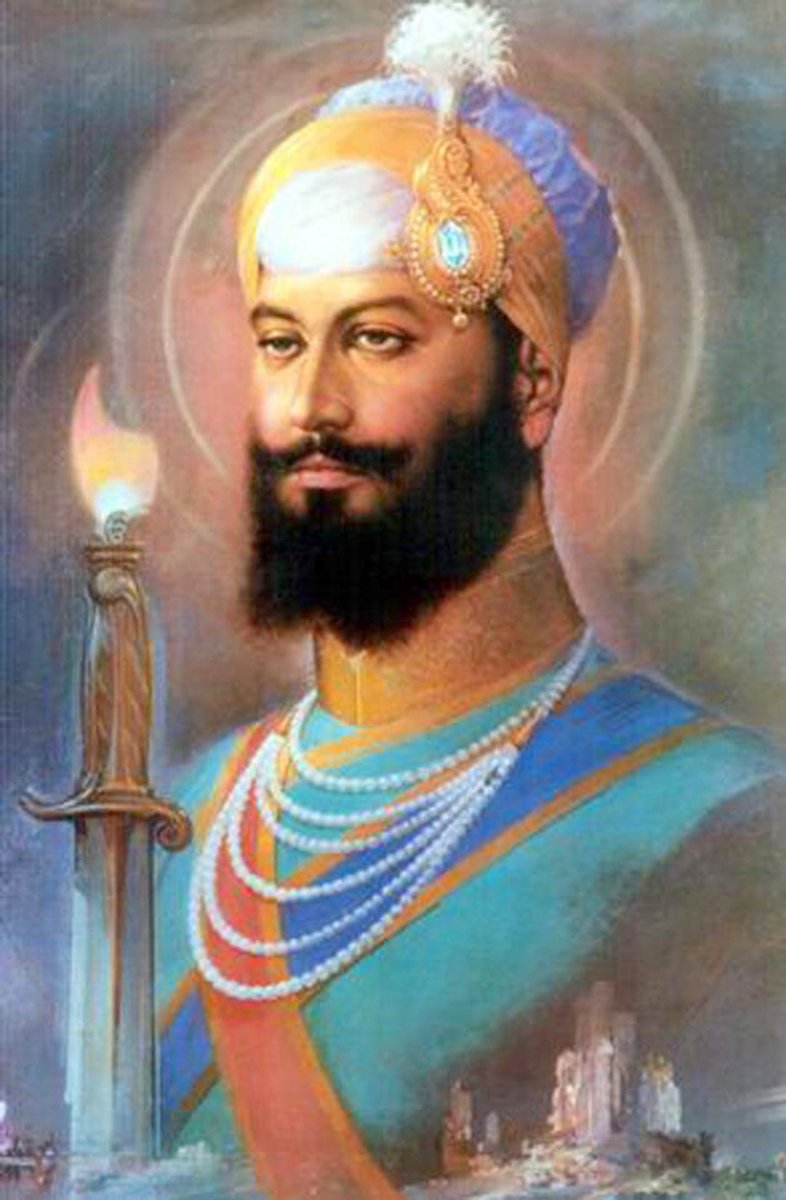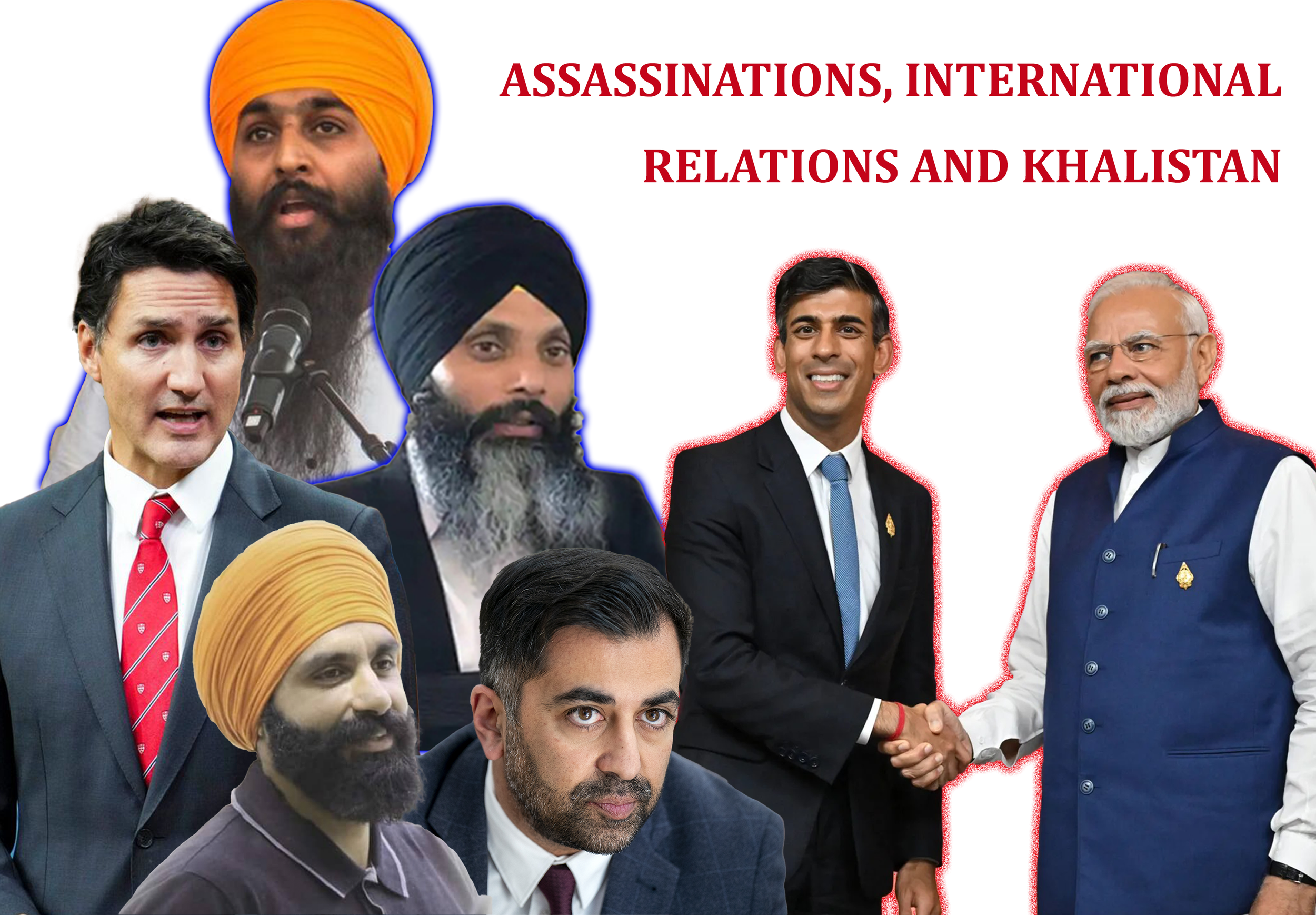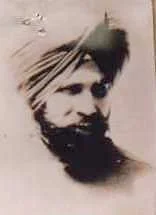Represent Sikhi...not just Sikhs.
/ਸਤਿਗੁਰ ਕੀ ਸੇਵਾ ਗਾਖੜੀ ਸਿਰੁ ਦੀਜੈ ਆਪੁ ਗਵਾਇ ॥:
It is very difficult to serve the Satguru; to do so one must surrender their head (physically through shaheedee and/or spiritually through the eradication of haumai)
The last few months have been hard for many amongst the Sikh community, I am not one of them though. For 20 years I have witnessed the Indian government use propaganda through its channels within the Indian media to periodically raise an issue of Sikh extremism in an attempt to thwart Sikh political activism from the diaspora Sikh community. This response from the Canadian media when it comes to Sikhs in Canada speaking about human rights, political change (domestic or international), and Khalistan is the standard approach of “lazy journalism” that many self-declared experts on Sikh issues and Khalistan portray. This is nothing new and nothing shocking. For some of us, it has always been the norm. The idea that this country is ours has been foreign to me for a very long time and therefore the expectation that white media, with all its privilege, would want to understand me and represent the truth of what I say is also foreign to me.
When I explain this line of thought to other Sikhs I get a response of “then what are you?” as if I need a nationality to identify myself. I am a human being and a Sikh of the Guru Granth and Guru Panth. That is my identity and when it comes to my nationality, what I am is homeless. My home is Khalistan/Punjab and it has been occupied by foreigners from the time of the British in 1849 to the reins of power being handed to the Brahmin and India in 1947. Decades of colonial rule have turned into centuries, and the only thing that changed for us was the color of the hand holding the chains we are enslaved by. Punjab/Khalistan is my home because my Guru created a vision for what it was to become and that revolution started for us when he asked for one of us to come forward, head in hand, and has continued through every Sikh generation since. To serve the Guru is to serve and reflect on Naam/Shabad and in doing so, to truly live the sach (truth) we ought to speak:
ਸਤਿਗੁਰੁ ਜਿਨੀ ਨ ਸੇਵਿਓ ਸਬਦਿ ਨ ਕੀਤੋ ਵੀਚਾਰੁ ॥
ਅੰਤਰਿ ਗਿਆਨੁ ਨ ਆਇਓ ਮਿਰਤਕੁ ਹੈ ਸੰਸਾਰਿ ॥:
Those who have not served the “Satguru” no Divine Wisdom has dawned in their Heart;
they may appear as alive but they are dead in the world (spiritually dead-ਆਤਮਕ ਮੌਤ)
If Punjab/Khalistan is my home then why am I or others like me here you might ask? Well, where should we go? I live on the unceded traditional territories of the Katzie, Kwantlen and Matsqui First Nations and am still learning and coming to terms with my settler history here. Should I go back to the occupied and oppressed territories where my brothers and sisters remain in silence caused by the psycho-trauma of genocidal campaigns inflicted upon them by the Indian government? Should I go back to the villages where Jaswant Singh Khalra found thousands of young boys disappeared and extra-judicially murdered so perhaps one day I could be added to that list just like he was? Or should I go to the capital of Delhi and await another genocide of my people like in November 1984 when thousands were burned alive in the streets with no justice being provided after almost 35 years? I have every right to be here and I have every right to raise my voice for the people of Khalistan/Punjab. We are colonizers, occupiers, and settlers here on this land and I can agree that my existence here is somewhat of a hypocrisy in itself, but until I have somewhere to return to, I fully intend to build solidarity with the traditional rulers of these unceded territories and use this space for the betterment of people here and elsewhere. I have a passport, social insurance number, etc. for as long as I need it to survive. I have no ill-will towards Canada as the land and society has provided me with a platform to engage the Indian government’s violent and genocidal agenda; although I fully understand the need to do better in the treatment and acknowledgement of First Nations and their legitimate claims to their territories. Personally, I would love to see every single human being succeed in life and be safe from discrimination, exploitation and oppression and that is why my advocacy for Khalistan is completely legitimate from this land. It doesn’t matter if you came here in the 1600s or came here last week, you still came here from somewhere and nobody has true “ownership” of the land here aside from those whose unceded territory it is. Therefore, the trauma and wounds some of us carry from the sufferings of the multiple identities (racial, ethnic, cultural, religious, etc.) we see ourselves through will always be with us.
“Canada in the twenty-first century exists as a country enriched by immense human and natural resources. It is a nation filled with majestic beauty beyond compare, populated by talented individuals attracted from all corners of the globe in recent years and generations past in search of better lives for themselves and their families- all of this occurring with little regard to its illegitimate and immoral beginnings.”
- Bradford W. Morse, "Reconciliation Possible? Reparations Essential," ed. Mike DeGagne, Marlene Brant-Castellano and Linda Archibald (Aboriginal Healing Foundation, 2008), 235.
Currently, some Sikhs who are responding inadequately to media coverage in Canada are doing so from an ideologically and politically confused position of weakness. There are two things happening simultaneously; the first is this position of being “shocked” that this is happening to them in what they consider their “home” and the second that they are trying to respond in a manner to fit into this “home” by misrepresenting Sikhi to satisfy needs that stem from their own personal position of weakness. Putting the interests of individual Sikhs over Sikhi itself has been problematic in the past for Sikhs and a well-known example is the case of Ram Rai. Ram Rai misrepresented Sikhi (changed a shabad) out of fear to the state/political power (Aurangzeb and the Mughal Empire) in order to avoid harm. By doing so Ram Rai was accepted by the Mughal Empire and then rewarded with a Dera near Dehradun; a similar need for acceptance and possibly “rewards” is manifesting itself currently as well. Ram Rai was excommunicated by Guru Har Rai Sahib from the Sikh Panth for this misrepresentation and where some may not consider the misrepresentation of Sikhi occurring right now through media engagement at the same level, there is no denying that the misrepresentation itself is occurring. If the only issue for us in this misrepresentation is the degree of Ram Rai (full or partial) we want to become, then I will say without a doubt, we have failed as Guru de Sikh.
The context of sangarsh and patshahi is missing from all media coverage and as stated already, it is to be expected. The unfortunate thing is that this same context is missing from virtually all Sikh responses within Canada as well. There is a desperate need to represent Sikhs amongst the Sikh sangat in Canada and everyone wants to #AskCanadianSikhs while unfortunately, Sikhi is being misrepresented due to the fear and weakness of those being “asked.” Even this is going to be hard for many apologetic types to digest, but how can you condemn all forms of violence as a Sikh? Using terms like struggle, defense, resistance and revolution are completely fine, yet these terms all depend on the mode and means adopted in order to carry them out. They can all be carried out with non-violence like Guru Arjan and Guru Tegh Bahadur and when necessary, they can all be carried out with the use of arms and violence like Guru Hargobind and Guru Gobind Singh.
As a Sikh, you cannot and should not run from this. To condemn this is to condemn your Guru. The Guru gave clear instruction as to when and where there was justification for their Sikhs to take up arms and the moral and ethical code a Sikh must abide by in doing so:
ਖਾਲਸਾ ਸੋਇ ਨਾਮ ਜਪ ਕਰੈ ॥ ਖਾਲਸਾ ਸੋਇ ਮਲੇਛ ਪਰ ਚੜ੍ਹ੍ਹ੍ਹੈ ॥ (੫੧)
Khalsa is the one who remembers the divine name; Khalsa is the one who charges at the invaders.(51)
ਖਾਲਸਾ ਸੋਇ ਨਾਮ ਸਿਉੁਂ ਜੋੜੇ ॥ ਖਾਲਸਾ ਸੋਇ ਬੰ ਧਨ ਕੋ ਤੋੜੇ ॥ (੫੨)
Khalsa is the one who is permeated with the celestial entity; Khalsa is the one who destroys bondage.(52)
ਖਾਲਸਾ ਸੋਇ ਜੋ ਚੜ੍ਹ੍ਹ੍ਹੇ ਤੁਰੰਗ ॥ ਖਾਲਸਾ ਸੋਇ ਜੋ ਕਰੇ ਨਿਤ ਜੰਗ ॥ (੫੩)
Khalsa is the one who charges (into a righteous war); Khalsa is the one who is ever ready for righteous war.(53)
ਖਾਲਸਾ ਸੋਇ ਸ਼ਸਤਰ ਕੋ ਧਾਰੈ ॥ ਖਾਲਸਾ ਸੋਇ ਦੁਸੰਟ ਕੋ ਮਾਰੈ ॥ (੫੪)
Khalsa is the one who adorns the arms; Khalsa is the one who exterminates the vicious.(54)
-Bhai Nand Lal, Tankhanama (conversations with Guru Gobind Singh)
Representing Sikhi in its mool form is the issue, not representing Sikhs and yes, there is a difference. A Sikh like me carries many weaknesses and in moments of uncertainty and potentially fear, I may want the problem to just go away and be accepted. If that means changing the mool (origin) of who I am and what I am supposed to represent then I may go along with it. But Sikhi is from the Guru and represented and manifested within Gurbani, Gur-itihas, and Gurmat. It is clear that the approach a Sikh must take in the most difficult moments must be gauged through Sikhi based on the examples of those who have represented it through action in our itihas. Almost every media piece written with some “context” as to the Indian government’s bloody campaigns against minority communities came at a price, but they were widely shared by panthic Sikhs nonetheless. So desperate were some of us for any half-decent representation that we let the very best of us, like Sant Jarnail Singh Bhindranwale, be sacrificed in the process. Sandy Garossino wrote a piece titled “The Truth Behind the Story Engulfing Canada’s Sikh Politicians” and even though it had the following in it, far too many Sikhs treated it as some kind of victory:
“India in the early eighties saw the emergence of a ruthless and charismatic Sikh nationalist, Jarnail Singh Bhindranwale. Then-prime minister Indira Gandhi had once cultivated the religious zealot for her own political purposes. Now Bhindranwale directly challenged her authority by violently seizing and occupying Sikhism's holiest shrine, the Golden Temple in Amritsar…
The Golden Temple assault electrified the entire Sikh faith. By slaughtering innocents along with Bhindranwale, Gandhi legitimized his cause and gave a face to Sikh religious persecution...
Bhindranwale's transformation from ruthless thug to religious icon and the face of Sikh religious persecution was complete.”
The highly derogatory language used against Sant Jarnail Singh Bhindranwale in this piece and many others is being forgiven or even purposely cast aside in order to use the remainder of the story to protect “Sikh politicians” like Jagmeet Singh in Canada. This is an unacceptable position for Sikhs to take from purely a Sikhi-sidhant perspective.
The issue that Jagmeet Singh faces is highly problematic in and of itself. Jagmeet Singh is being forced to explain himself for attending events where Sikh sovereignty is on full display, much like Prime Ministers, Premiers, MPs, MLA’s and Mayors of various municipalities and political parties and leanings across Canada have as well. The stark difference in media coverage however, illustrates the difference in how he is talked about compared to his White counterparts. The issue seems less about the venue or context and more about the legitimacy of the person himself, speaking frankly, a young brown man with a full beard and round turban who represents a very visible minority in this country. If Jagmeet Singh spoke about the events of 1984 and mass human rights violations the Sikh people suffered at the hands of the Indian government, then so have elected officials of multiple political parties and the former leader of the NDP Jack Layton. If Jagmeet Singh as a MPP spoke about Sikh genocide and put a motion forward in the Ontario legislature, then so did Sukh Dhaliwal a Liberal MP under Michael Ignatieff’s leadership and he did it in parliament in Ottawa. Further, it was Kathleen Wynne and the Ontario Liberals that stood for and pushed through the declaration of genocide in the Ontario legislature and not Jagmeet Singh and the Ontario NDP (who did raise it the year before, but didn’t have enough seats to see the motion through).
For someone like me, who has been involved in Sikhi parchar (with advocacy for Khalistan being a segment of that parchar) for almost 2 decades, I have no issue in stating that Jagmeet Singh is a Canadian political leader; Jagmeet Singh is NOT a Sikh leader. Jagmeet Singh agreeing or disagreeing with Sikh political causes doesn’t make them any more or less relevant and nor has he ever been given any authority to speak on behalf of the Sikh Panth. For any sangarsheel Sikh, Bhai Jagtar Singh Hawara is the Jathedar of Sri Akal Takht Sahib and it is his leadership that we seek since his history, perspective and outlook continue to be centered around the patshahi the Guru bestowed upon us. Jathedar Jagtar Singh Hawara is in a leadership role because even while wrapped in chains he continues to represent the soch that Guru sahib gave us in the form of Sikhi. Jathedar Hawara doesn’t and nor should he ever, represent the fears and weaknesses of Sikhs who become unhinged because they no longer know how to justify their mool and existence in the diaspora. Jathedar Jagtar Singh Hawara re-ignites in panthic Sikhs a never-ending and never-wavering inspiration to put the strength of Sikhi before the maya-infested weakness of Sikhs:
ਡਗਮਗ ਛਾਡਿ ਰੇ ਮਨ ਬਉਰਾ ॥
Stop your wavering, O crazy people!
ਅਬ ਤਉ ਜਰੇ ਮਰੇ ਸਿਧਿ ਪਾਈਐ ਲੀਨੋ ਹਾਥਿ ਸੰਧਉਰਾ ॥੧॥ ਰਹਾਉ ॥
Now that you have taken up the challenge of death, let yourself burn and die, and attain perfection.
Our position is clear, we wish to represent Sikhi to the best of our ability. Sikh Liberation Front (SLF) penned a piece a few weeks ago which best captures the state of the apologetic Sikh today who either knowingly or unknowingly are distancing themselves from their mool by representing and defending their personal weaknesses and defining it as “representing Sikhs.”
“The apologists choose to project the Sikh jujharoo lehar (rebellion) as an anachronism of the past—an irrational (“extremist/terrorist”) outburst of violence that has no place in the liberal democratic “present” of their imaginations. They choose to latch on to a clear-cut division of time in order to banish Sikh existence and resistance into the realm of the “Other” in order to maintain their image as obedient, non-threatening citizens. .. The ignorance of these claims overlooks the legacy of genocide and the ongoing structures of repression which inhibit discourses of Sikh sovereignty from the political space in Punjab (52 Khalistani activists have been arrested in Punjab between April—December 2017 alone). Secondly, these claims ignore widespread political movements in recent years which centre around the movement for Khalistan. This includes massive mobilizations against the pending execution of Sikh political prisoners and for their immediate release—all of whom are in prison for waging an armed struggle against the Indian state in the pursuit of Khalistan. The symbolism and discourse underlying this movement clearly focused on the necessity of the armed struggle these prisoners were imprisoned for.”
-Prabjot Singh (SLF), “Confronting Race and Rejecting the Politics of Apology”
My appeal is to all those Sikh jathebandees, organizations, Gurdwara Sahibs, and any other individual or collective Sikhs that are currently speaking on this issue, ensure that we represent Sikhi in its mool form rather than giving in to fear or weakness in those difficult moments. As a Panth we have each other in the form of sangat and the Guru; if we are not able to perform this representation then we must look for and utilize those amongst our sangat that can. Our misrepresentation today will set unfortunate precedents for generations of Sikhs and how they interact with shastars, Gur-itihas and Khalsa Mahima. We cannot allow this to happen.
As stated in Panth Parkash by Rattan Singh Bhangu, when Bhai Taru Singh was arrested the Sikh sangat came together and did ardas and it was in the hopes that Sikhi would be represented until the last breath so that it would continue to exist in its mool roop as the Guru intended:
ਸਿੱਖੀ ਸਾਥ ਨਿਬਾਹੀ ਸਾਸ ॥
(May Bhai Taru Singh) Represent Sikhi until the last breath.
When news of Bhai Taru Singh’s shaheedee came to the sangat they once again performed ardas:
ਸਤਿਗੁਰ ਪੈਜ ਖਾਲਸੇ ਰਾਖੀ ॥
ਰਹੈ ਜਗਤ ਮੈਂ ਜੁਗ ਜੁਗ ਸਾਖੀ ॥
Satguru has honored the Khalsa (through Bhai Taru Singh’s representation of Sikhi until his last breath); this example (representation of Sikhi) will remain until the end of time.
This is who we are and must become...in time Bhai Taru Singh and at least for now, the sangat that believed death was preferable to misrepresentation of Sikhi.
KHALISTAN ZINDABAD
Moninder Singh
Sikh Liberation Front (SLF)





